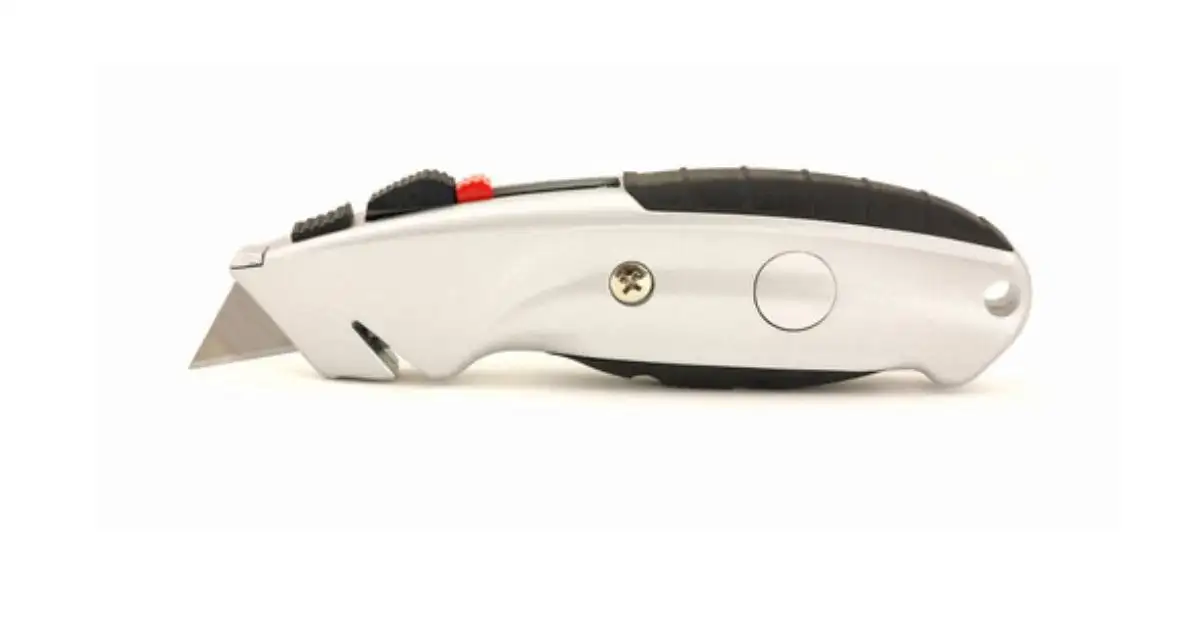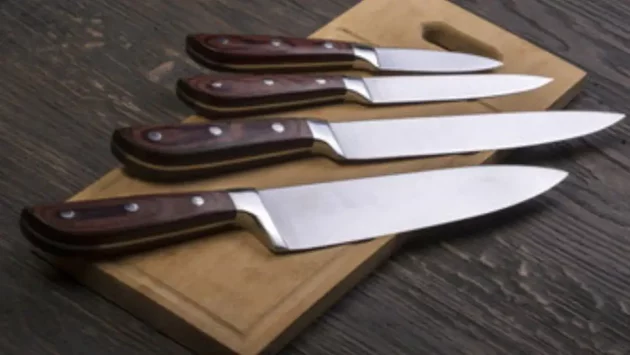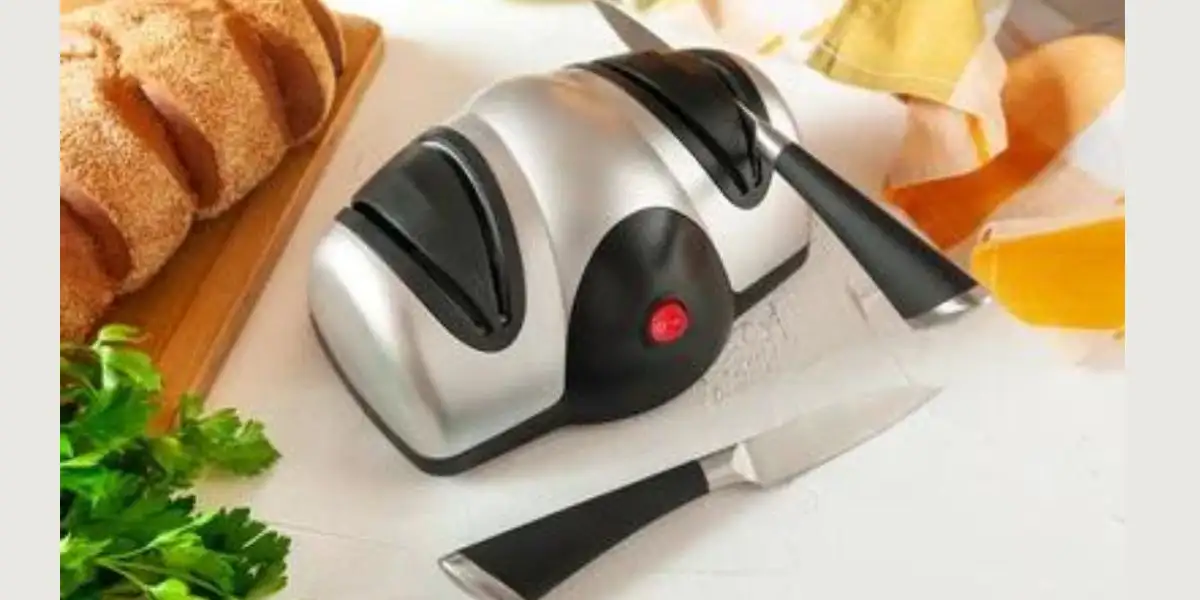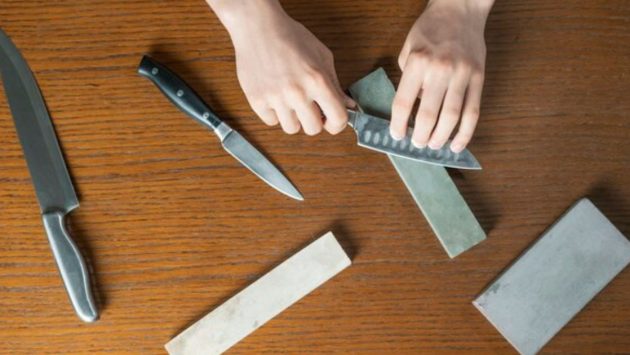Slice and Dice: The Utility Knife’s Role in Meat Preparation
Table of Contents
ToggleIntroduction:
In the culinary world, where precision and efficiency reign supreme, the utility knife has earned its place as a multifaceted kitchen workhorse. Renowned for its adaptability in slicing and dicing fruits and vegetables, the question naturally arises: can this versatile tool extend its prowess to cutting meat?
Join us as we unravel the capabilities of the utility knife, exploring its anatomy, variations, and the crucial question of whether it can carve through various cuts of meat with finesse. Let’s embark on a culinary journey to uncover the untapped potential of the utility knife in meat preparation.
What is a utility knife?
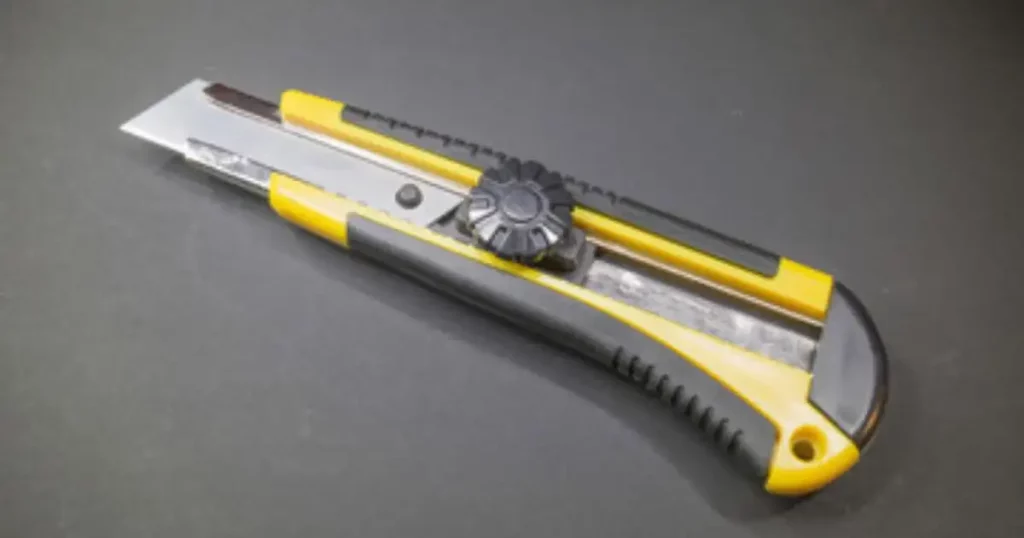
Utility knives, often referred to as the “middle ground” in the culinary arsenal, bridge the gap between larger chef’s knives and more specialized blades. To truly appreciate the utility knife’s versatility, it’s crucial to delve into its design, purpose, and the tasks it excels at.
1. Blade Length and Shape:
Utility knives typically boast a blade length ranging from 4 to 7 inches, making them shorter than chef’s knives but longer than paring knives. This moderate size contributes to their agility and manoeuvrability in various cutting situations. The blade is often straight-edged, although some variations feature a slight curve for enhanced rocking motion during chopping.
2. Pointed Tip
A distinguishing feature: of utility knives is their pointed tip. This design facilitates precision, allowing users to make intricate cuts and navigate around bones or joints effortlessly. Whether it’s trimming excess fat or sectioning small fruits, the pointed tip enhances control.
3. Serrated vs. Non-Serrated blades:
Utility knives come in both serrated and non-serrated variations. Non-serrated blades are excellent for clean, precise cuts, making them ideal for tasks like slicing tomatoes or portioning meats. On the other hand, serrated utility knives excel at cutting through crusty bread and delicate items without crushing them.
4. Versatility in Cutting Tasks:
The utility knife’s name aptly reflects its broad range of applications. From slicing fruits and vegetables to trimming meat and poultry, this knife adapts seamlessly to an array of cutting tasks in the kitchen. Its manageable size and balanced design make it a go-to choice for everyday food preparation.
5. Balancing Act:
A well-designed utility knife achieves a delicate balance between the blade and handle. This equilibrium enhances user control and reduces fatigue during prolonged cutting sessions. The handle’s ergonomic design further contributes to comfortable handling, ensuring a secure grip for precision cutting.
6. Everyday Use:
While chef’s knives may take the spotlight for heavy-duty tasks and paring knives for intricate detailing, utility knives fill the everyday gap. Their versatility makes them an indispensable tool for a variety of kitchen activities, making quick work of slicing, dicing, and chopping.
What is the Anatomy of a Utility Knife?
To truly appreciate the versatility and functionality of a utility knife, it’s essential to dissect its anatomy, understanding how each component contributes to its overall performance in the kitchen.
1. Blade:
At the heart of every utility knife lies the blade—the primary actor in any cutting task. This knife is a mixture of high-carbon stainless steel which plays an important role in the sharpness and durability of the knife. l Variations: Some utility knives feature a straight-edged blade, ideal for clean, precise cuts on a variety of ingredients. Others may have a slightly curved edge, facilitating a rocking motion during chopping tasks.
2. Tip:
The pointed tip of a utility knife distinguishes it from other kitchen blades. This design enables precise control and accuracy, making it adept at intricate tasks such as deveining shrimp, removing seeds from peppers, or precisely trimming fat from meat.
3. Spine:
The spine of the utility knife runs along the top, opposite the cutting edge. It adds stability to the blade and provides a surface for applying additional pressure when necessary.
5. Tang:
A full tang, where the metal of the blade runs through the entire handle, is often preferred for its sturdiness. Some utility knives may have a partial tang, but the key is ensuring a secure connection between the blade and handle for stability.
7. Rivets:
Rivets secure the tang to the handle, maintaining the structural integrity of the knife. High-quality utility knives often feature rivets that are flush with the handle to prevent food particles from accumulating, ensuring hygiene and easy maintenance.
What are the types of Utility knives?
1. Standard/Non-Serrated Utility Knife:
- Blade Type: Features a straight-edged blade for clean, precise cuts.
- Common Uses: Slicing fruits, vegetables, and boneless meats. Ideal for tasks that require accuracy.
2. Serrated Utility Knife:
- Blade Type: Equipped with a serrated edge featuring small, pointed teeth.
- Common Uses: Slicing through items with tough exteriors and soft interiors, such as tomatoes, bread, or citrus fruits.
3. Offset Utility Knife:
- Blade Type: Similar to a standard utility knife but with an offset handle, it provides additional knuckle clearance.
- Common Uses: Enhances safety and comfort when slicing through sandwiches or other foods with a flat surface.
4. Scalloped/Granton Edge Utility Knife:
- Blade Type: Features oval-shaped indentations along the edge, known as a Granton edge or scallops.
- Common Uses: It reduces friction and sticking when cutting, making it suitable for slicing through cheese, vegetables, and meats.
5. Stiff vs. Flexible Blade Utility Knife:
- Blade Flexibility: Some utility knives have a stiff blade, ideal for controlled, precise cuts. Others have a more flexible blade, allowing for easier manoeuvring around bones and joints.
- Common Uses: stiff blades are for detailed work, while flexible blades are suitable for tasks requiring more agility.
6. Japanese-Style Utility Knife:
- Blade Type: Inspired by traditional Japanese knives, these utility knives often feature a thin, sharp blade.
- Common Uses: Precise slicing and dicing, reflecting the precision-oriented nature of Japanese cutlery.
7. Multi-Purpose Utility Knife:
- Blade Type: Designed with a versatile blade that combines the features of standard, serrated, and sometimes scalloped edges.
- Common Uses: All-encompassing utility for various cutting tasks, eliminating the need for multiple knives.
8. Mini Utility Knife/Paring Knife:
- Blade Type: It resembles a smaller version of a utility knife or chef’s knife.
- Common Uses: Detail-oriented tasks, such as peeling, trimming, and other intricate cutting needs.
- Choosing the right type of utility knife depends on your specific kitchen requirements and personal preferences. Whether you need precision, versatility, or specialized features, there’s a utility knife designed to meet your culinary demands.
Can you cut meat with a utility knife?
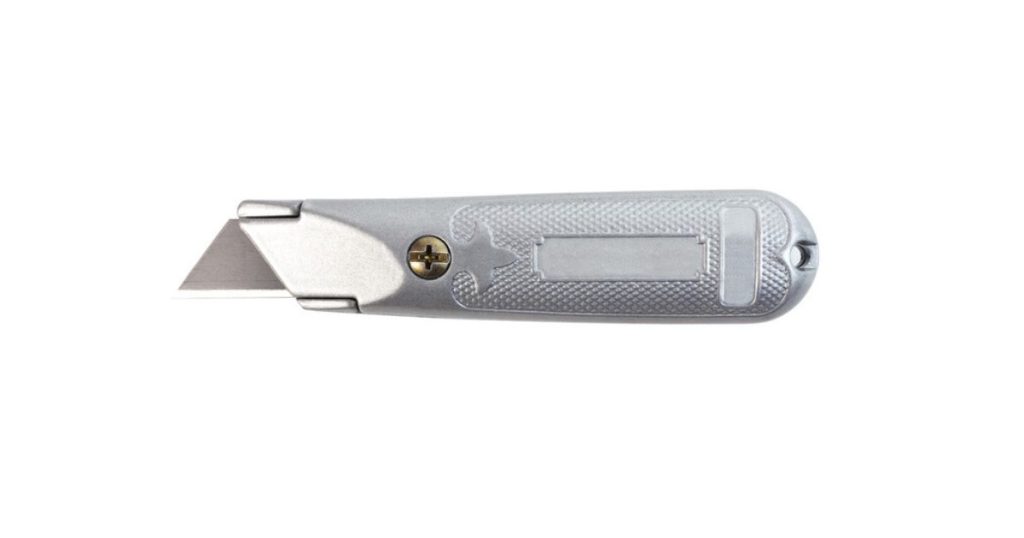
- Yes, you can use the utility knife to cut meat because it has qualities of sharpness and durability, which make it more valuable for cutting meat. A utility knife has a fairly large blade and serrated edge, which is a good thing.
- Here are some considerations and tips for cutting meat with a utility knife:
Sharpness is key.
- Ensure that the utility knife’s blade is sharp. Because of its sharpness, it works properly.
Meat selection:
- Utility knives work well for cutting boneless meats, such as poultry, beef, or fish. They are not ideal for cutting through bones or joints that may require a heavier-duty knife like a butcher’s knife.
Technique Matters:
- Use proper cutting techniques. Employ a rocking motion for precision cuts and ensure a stable cutting surface to enhance control.
Slicing and Dicing:
- Utility knives are excellent for slicing through cooked or raw meats, making them suitable for tasks like preparing stir-fries, slicing grilled chicken, or dicing meat for stews.
Consider Serration:
- If your utility knife has a serrated edge, it can be particularly useful for slicing through tougher exteriors, such as the crispy skin of a roasted chicken or the crust of a steak.
Size Matters:
- The moderate size of a utility knife provides a good balance between manoeuvrability and cutting capacity. It’s versatile enough to handle various meat-cutting tasks without being too cumbersome.
Regular Maintenance:
- Keep your utility knife well-maintained by regularly sharpening the blade. This ensures optimal performance and reduces the effort required for cutting.
What are some common tips for cutting meat with a utility knife?
Cutting meat with a utility knife requires a combination of proper technique, safety measures, and equipment maintenance. Here are some common tips to ensure efficient and safe meat cutting with a utility knife:
Start with a sharp blade:
- Ensure your utility knife has a sharp blade. A dull blade not only makes cutting more difficult but also increases the risk of accidents. Regularly sharpen the blade using a honing rod or a sharpening stone.
Choose the right utility knife:
- Select the appropriate type of utility knife based on the specific meat-cutting task. For example, a straight-edged utility knife is suitable for clean cuts, while a serrated utility knife may be useful for slicing through tougher exteriors.
Use a stable cutting surface.
- Place a stable cutting board on a secure surface to provide a solid foundation for your meat-cutting tasks. This helps prevent slips and ensures better control over the knife.
Adopt the correct grip.
Hold the utility knife with a firm but comfortable grip. Use the pinch grip, where your thumb and index finger pinch the blade near the bolster, for better control and precision.
Practice Controlled, Even Pressure:
- Apply controlled, even pressure while cutting. Avoid exerting excessive force, as this may lead to loss of control and increase the risk of accidents.
Rocking Motion for Precision:
- For precise cuts, employ a rocking motion with the utility knife. This is especially useful when slicing through meats like poultry or creating uniform slices.
Slice Against the Grain:
- When cutting cooked meats, such as roasts or steaks, slice against the grain for a more tender result. This helps break down the muscle fibres and enhances the overall eating experience.
Use the tip for detailing:
- The pointed tip of the utility knife is ideal for detailing work. Use it for intricate cuts, trimming excess fat, or removing connective tissue.
MindYour Fingers:
- Be mindful of your fingers, and keep them away from the blade’s path. Utilize a claw grip when holding the meat, tucking your fingers safely away from the knife.
Clean and Sanitize:
- Regularly clean and sanitize both the utility knife and the cutting surface to prevent cross-contamination. This is especially important when transitioning between different types of meat.
Know the knife’s limitations:
- Recognize that a utility knife may not be suitable for heavy-duty tasks like butchering large cuts or dealing with bones. For such tasks, consider using a dedicated butcher’s knife or cleaver.
What are the safety considerations?
Shar blades require respect.
- A sharp blade is an asset in the kitchen, but it demands respect. Be aware of the knife’s sharpness and handle it with care. A sharp blade is more predictable and safer than a dull one.
SecureCutting Surface:
- Use a stable and non-slip cutting surface, such as a cutting board, to prevent the knife from slipping during use. Avoid using unstable surfaces that can increase the risk of accidents.
Proper Grip:
Hold the utility knife with a proper grip. Use the pinch grip, where your thumb and index finger pinch the blade near the bolster, for better control. Ensure a firm but comfortable grip to prevent the knife from slipping.
Cut Away from Your Body:
Always cut away from your body, and keep the knife moving in a direction that avoids contact with your limbs. This helps minimize the risk of injuries if the knife slips or encounters resistance.
Use the right knife for the task:
- Choose the appropriate utility knife for the specific meat-cutting task. Different knives are designed for different purposes, and using the right tool enhances both efficiency and safety.
Be mindful of bones.
- If you’re cutting meat that is still on the bone, be cautious when approaching the bone. Utility knives are generally not designed for cutting through bones, so use a dedicated butcher’s knife or cleaver for such tasks.
Store knives safely.
- When not in use, store knives in a knife block, magnetic strip, or blade guard. Avoid leaving knives loose in drawers, as this can increase the risk of accidental cuts when reaching for other items.
Conclusion:
In conclusion, the utility knife proves to be a versatile and indispensable tool in the kitchen, showcasing its adaptability in various cutting tasks, including the cutting of meat. Understanding the anatomy of a utility knife provides insights into how its components work together to achieve precision and control.
Throughout this exploration, we’ve learned about different types of utility knives, each tailored to specific cutting needs, from the standard straight-edge utility knife to the serrated and offset variations. We’ve also discussed the considerations and techniques for cutting meat with a utility knife, emphasizing the importance of a sharp blade, proper grip, and safe-cutting mindful practices.
FAQ
1. Can I use a utility knife to cut through bones?
- Answer: No, utility knives are not designed for cutting through bones. They are best suited for slicing through boneless meats, fruits, and vegetables. For tasks involving bones, it’s recommended to use a dedicated butcher’s knife or cleaver.
2. Are all utility knives dishwasher-safe?
- Answer: While some utility knives may be labelled as dishwasher-safe, it’s generally advisable to hand wash them. Harsh dishwasher detergents and high water pressure can affect the blade’s sharpness and the knife’s overall quality. Hand washing ensures longevity and optimal performance.
3. Can a utility knife be used for filleting fish?
- Answer: Yes, a utility knife can be used for filleting smaller fish. The pointed tip and sharp blade make it suitable for precise cuts. However, for larger fish or more intricate filleting tasks, a specialised fillet knife might be a better choice.
4. How often should I sharpen my utility knife?
- Answer: The frequency of sharpening depends on usage. As a general guideline, sharpen your utility knife regularly, especially if you notice a decrease in performance. For regular home use, sharpening every few weeks or when the blade begins to dull is usually sufficient.
7. Do I maintain the balance of a utility knife?
Answer: Maintaining the balance of a utility knife involves regular maintenance. Keep the blade sharp through proper sharpening, clean the knife promptly after use, and store it properly. A balanced knife enhances control and reduces the risk of accidents during cutting tasks.

